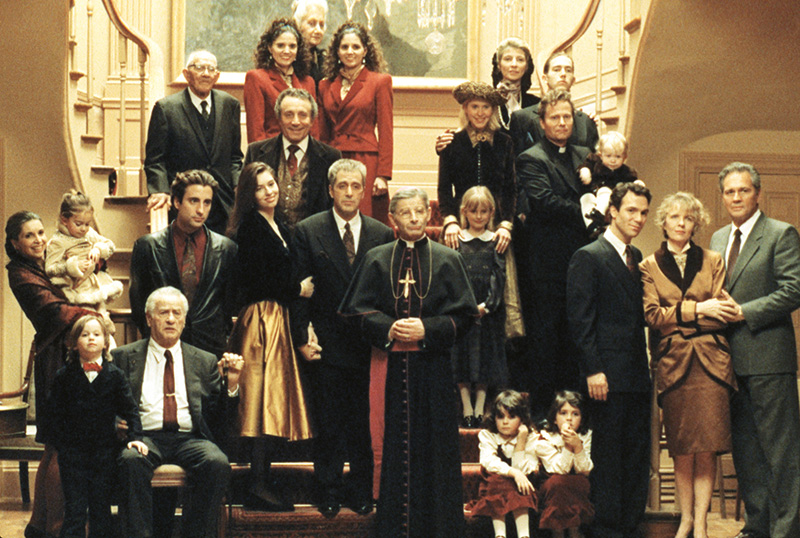Paramount Pictures will release a new edit and restoration of Francis Ford Coppola’s final film in his epic Godfather trilogy entitled Mario Puzo’s THE GODFATHER, Coda: The Death of Michael Corleone. This new version of The Godfather: Part III achieves director/screenwriter Coppola and screenwriter Puzo’s original vision for the finale, which has been meticulously restored for the finest presentation of the Corleone saga’s last chapter.
RELATED: Scream 5 Adds The Boys Star Jack Quaid to the Cast
Mario Puzo’s THE GODFATHER, Coda: The Death of Michael Corleone will have a limited theatrical release in December, followed by availability on Digital home entertainment platforms and on disc.
“‘Mario Puzo’s THE GODFATHER, Coda: The Death of Michael Corleone’ is an acknowledgment of Mario’s and my preferred title and our original intentions for what became ‘The Godfather: Part III,’” said Coppola. “For this version of the finale, I created a new beginning and ending, and rearranged some scenes, shots, and music cues. With these changes and the restored footage and sound, to me, it is a more appropriate conclusion to ‘The Godfather’ and ‘The Godfather: Part II’ and I’m thankful to Jim Gianopulos and Paramount for allowing me to revisit it.”
Coppola’s masterful film adaptation of Puzo’s novel chronicles the rise and fall of the Corleone family and the saga is rightfully viewed as one of the greatest in cinematic history. Celebrating its 30th anniversary this year, The Godfather: Part III was nominated for seven Academy Awards, including Best Picture and Best Director. The film follows Michael Corleone (Al Pacino), now in his 60s, as he seeks to free his family from crime and find a suitable successor to his empire.
Coppola and his production company American Zoetrope worked from a 4K scan of the original negative to undertake a painstaking, frame-by-frame restoration of both the new Mario Puzo’s THE GODFATHER, Coda: The Death of Michael Corleone and the original The Godfather: Part III.
In order to create the best presentation possible, Zoetrope and Paramount’s restoration team began by searching for over 50 original takes to replace lower resolution opticals in the original negative. This process took more than six months and involved sifting through 300 cartons of negative. American Zoetrope worked diligently to repair scratches, stains, and other anomalies that could not be addressed previously due to technology constraints, while enhancements were made to the original 5.1 audio mix. These thorough restoration efforts were not immune to the coronavirus pandemic: midway through the project, all work—even the search for the negative—shifted to the San Francisco Bay area and Los Angeles and was completed by Zoetrope and Paramount remotely.
RELATED: Neal Moritz Extends First-Look Deal with Paramount Pictures
“Mr. Coppola oversaw every aspect of the restoration while working on the new edit, ensuring that the film not only looks and sounds pristine but also meets his personal standards and directorial vision,” said Andrea Kalas, senior vice president, Paramount Archives.
Additional details about the theatrical and home entertainment releases will be provided at a later date.










